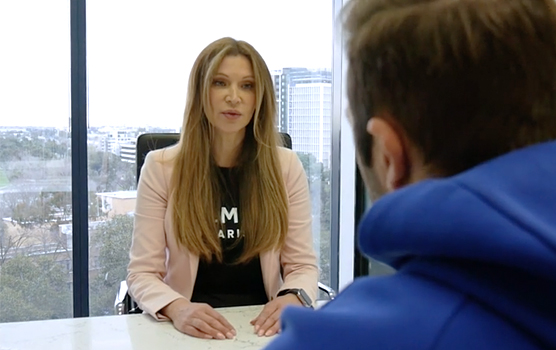
Hair Transplants in Turkey: Risks, Mistakes, and How They Can Be Corrected
Quick Answer: Many Australians travel to Turkey for low cost hair transplant surgery. While prices are cheaper, risks include unqualified staff, unsafe facilities, unnatural results, scarring, and limited follow up care. Revision surgery is often more expensive and complex than the first procedure. Patients should confirm medical qualifications, regulation, and aftercare before deciding..
The International Society of Hair Restoration Surgery (ISHRS) has issued warnings about unlicensed providers through its patient safety initiative: fightthefight.ishrs.org
Why Turkey Attracts Patients
- Lower upfront fees compared with Australian clinics
- Package deals combining surgery, flights, and hotels
- High volume social media marketing
The appeal is strong, but patients must understand that cheaper pricing may reflect lower safety standards and limited accountability.
Common Problems Reported
Poor Aesthetic Results
Patients often report hairlines set too low, grafts angled unnaturally, or density that looks patchy. These issues can draw more attention to the scalp rather than concealing loss.
Donor Zone Damage
Excessive harvesting can permanently thin the donor area. Once this supply is exhausted, options for repair are limited.
Safety and Regulation Issues
In some clinics, surgery is carried out by unlicensed staff rather than qualified doctors. Sterile protocols may not be followed, raising infection risks.
Lack of Aftercare
Once a patient returns home, follow up is rarely available. Complications such as infection, shock loss, or scarring may go untreated until corrective surgery is considered.
Emotional Consequences
Instead of boosting confidence, disappointing outcomes often create stress, frustration, and regret. The psychological impact may be as significant as the physical result.

The Cost of Revision
Corrective procedures require advanced skills and are more demanding than first time surgery. Doctors may need to:
- Excise or remove misplaced grafts
- Implant new grafts to disguise scars
- Recreate a natural hairline
- Spread remaining donor hairs for better balance
Revision is often more costly than the initial operation. Healing times can be longer and the donor supply may not allow for complete restoration.

The Cost of Revision
Corrective procedures require advanced skills and are more demanding than first time surgery. Doctors may need to:
- Excise or remove misplaced grafts
- Implant new grafts to disguise scars
- Recreate a natural hairline
- Spread remaining donor hairs for better balance
Revision is often more costly than the initial operation. Healing times can be longer and the donor supply may not allow for complete restoration.
Recovery and Timeline of Results
Patients should understand the natural recovery pattern before committing to overseas surgery:
- First week: redness, swelling, and small scabs
- First month: transplanted hairs often shed, which is normal
- Three to four months: new growth begins, usually fine and soft
- Six months: noticeable thickening appears
- Twelve months: final density visible, with further subtle gains up to eighteen months
Long Term Planning Matters
Hair loss usually continues with age. Responsible planning includes designing a natural hairline that will look appropriate over time, and preserving donor supply for potential future procedures. Cheap overseas clinics may focus only on immediate coverage without considering these long term factors.
Safer Alternatives and How to Choose
Patients should ask:
- Is the doctor registered with AHPRA in Australia or an equivalent overseas body
- Who performs the surgery and what training do they hold
- Are case studies available with donor photos and full timelines
- What follow up is provided once you return home
FAQs
Q: Why are hair transplants cheaper in Turkey
A: Lower wages and operating costs reduce fees, but regulation and aftercare can vary greatly.
Q: Can a bad result be fixed
A: In many cases, yes. Revision surgery can improve appearance, but donor supply may be limited.
Q: What are the most common issues with overseas clinics
A: Unnatural hairlines, donor depletion, visible scars, and lack of aftercare are frequently reported.
Q: Is it safer to have surgery in Australia
A: Australian clinics must follow AHPRA standards, providing stronger safety, accountability, and medical oversight.
Restoring Confidence After a Poor Result
Medihair supports patients who have undergone unsatisfactory overseas procedures. Our doctors review donor supply, assess scarring, and provide an honest opinion on whether correction is achievable. While not all results can be fully reversed, many patients benefit from a carefully managed revision plan.
Book a Consultation
If you are considering surgery or need revision after an overseas transplant, Medihair provides an obligation free consultation either in person or online. If you proceed to the next stage, you will meet with an AHPRA registered doctor who will review your history, donor supply, and goals before offering tailored recommendations.
To book, call 1300 355 325 or Click Here.
Disclaimer: All surgical or invasive procedures carry risks. Results vary. This content does not provide psychological advice or guarantees of outcomes. Before proceeding, seek a second opinion from an appropriately qualified health practitioner. Images shown are illustrative only and used with consent.
AUTHOR
Bianca Shaw
A well-respected surgical stylist, Bianca Shaw has worked in the hair loss industry for 28 years, educating and supporting patients, and working alongside many of Australia’s leading surgeons. Qualified in Trichology and Hairdressing, Bianca was initially trained by a leading hair transplant surgeon and can perform a range of procedures including hair line design, placement of grafts for maximum density, and the dissection and implantation of hair follicles.
Having worked for leading hair loss companies, and managing a number of successful hair transplant practices, Bianca is committed to helping patients understand the treatment options available, ensuring they make the best decision and get the best results to improve their appearance and quality of life.
